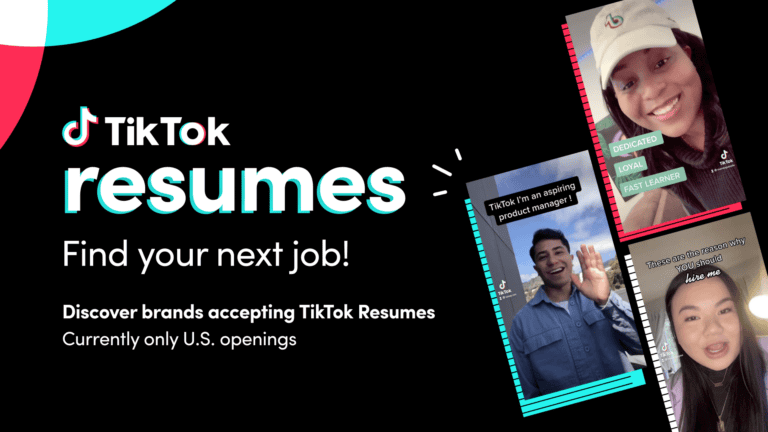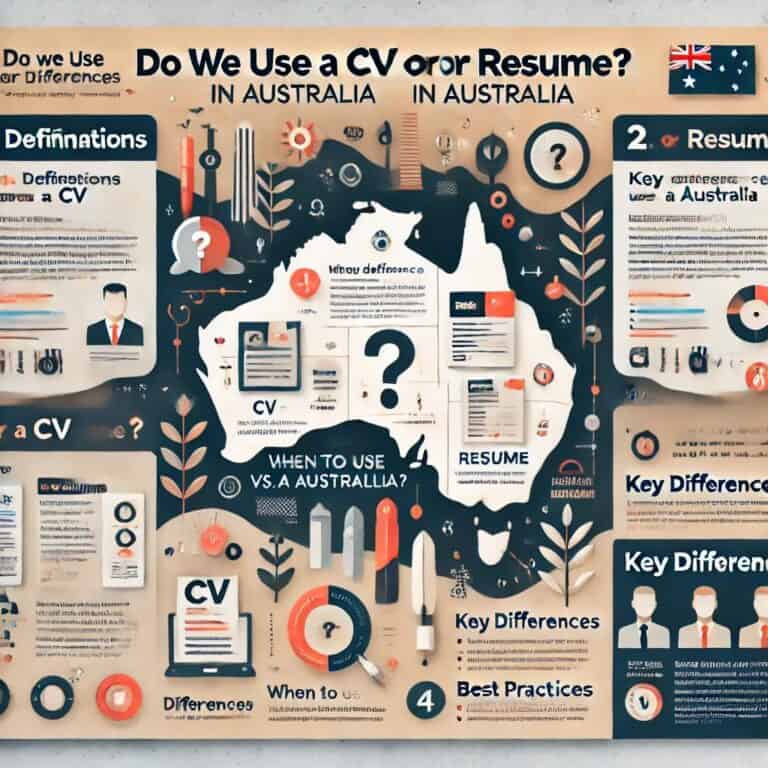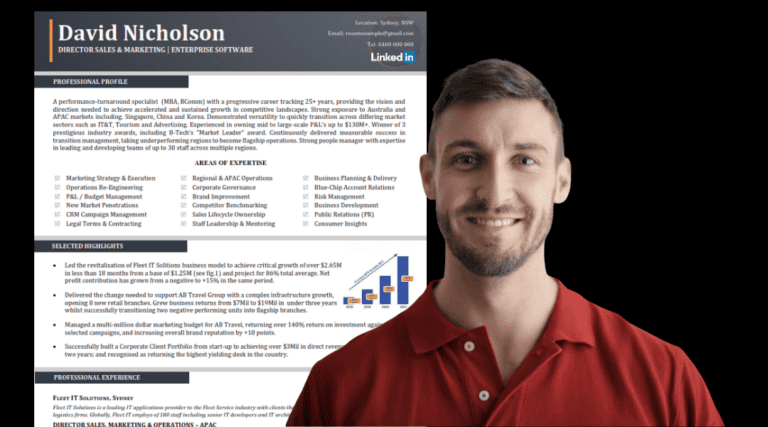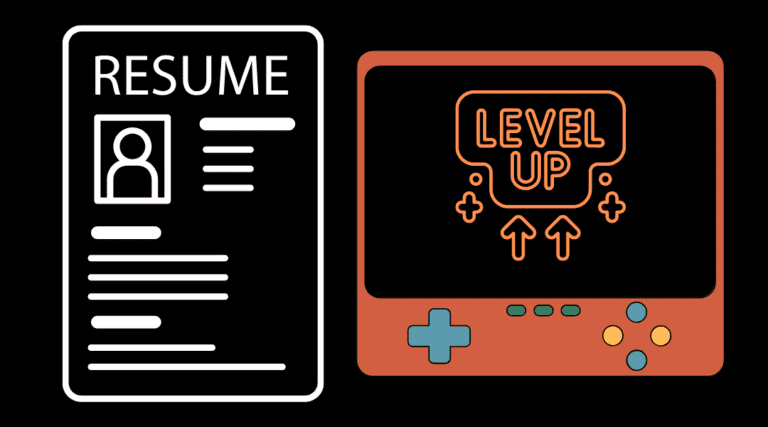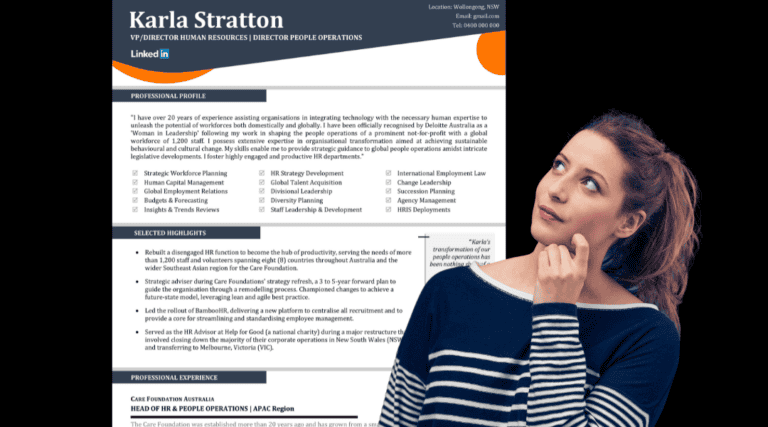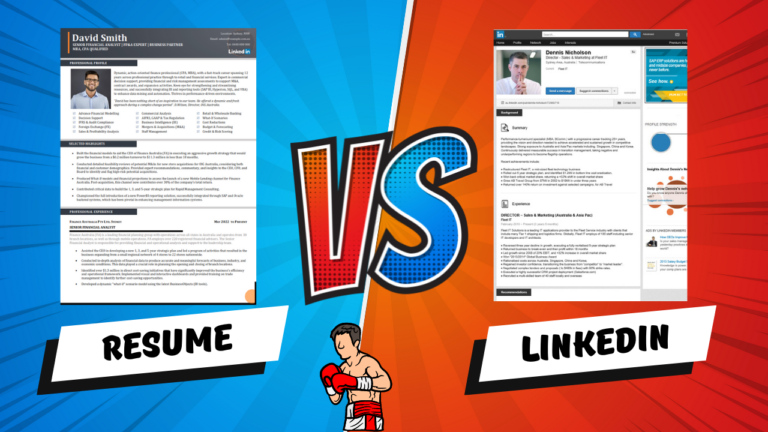The tech job market is fiercely competitive and unlikely to calm down anytime soon. With over 30 years in recruitment, both in the UK and Australia, I’ve seen it all – from great resumes to absolute fails. Here, I want to share with you just a few of the insights I have learned when writing resumes for the tech industry.
Understanding Tech Job Roles
The tech industry is a broad landscape, but specific roles require specific skill sets. Let’s break down what you need to highlight for the following job types:
Software Developer/Engineer Resume Tips
Whether you’re a coding ninja or a debugging master, you will need to think about how to best show your programming skills. For example, if you have expertise in JavaScript, Python, or C++, you will need to demonstrate this on your CV as well as target those specific job criteria. From my experience, many candidates miss the mark by listing skills without showing how they’ve applied them in real-world projects, and often omit the technical skills from the content of the resume. Make sure that your resume includes concrete examples of how your coding skills led to project outcomes.
Data Scientist/Analyst Resume Guide
The role of the data analyst has changed significantly, with data roles now all about turning numbers into stories. The different types of data science roles have significantly exploded, with fantastic opportunities across the Australian and international markets. Therefore, if you are applying for roles in the sector, it’s an ideal opportunity to show off your expertise in SQL, R, or Python with examples of how your data analysis drove business decisions or improvements. I’ve seen way too many candidates underplay their achievements or provide a very basic insight into the job spec. Don’t just list your skills – show how you’ve used them to solve complex problems.
Cybersecurity Specialist Resume Writing
Cybersecurity continues to grow, and expertise in frameworks like NIST and ISO 27001 are in significant demand. When planning the content of your resume, you need to highlight real-world scenarios where you’ve mitigated risks or dealt with security breaches. Recruiters need clear examples of your hands-on experience with security tools and protocols, but more importantly, how you can take the initiative in integrating cybersecurity as a proactive framework.
IT Support Specialist Resume Tips
For those in IT support, showing your troubleshooting skills and familiarity with ticketing systems like ServiceNow is key. There’s no shortage of in-demand roles for IT support, with many of the top 100 ASX-listed companies such as CBA, Rio Tinto, J&J, Siemens, etc., all wanting hands-on support personnel.
Tech Project Manager Resume
Managing tech projects requires more than just organisation – it’s about leadership and delivery. Highlight your experience with project management methodologies like Agile and tools like Asana. Show how you’ve led teams to deliver projects on time and to budget. Don’t forget to upskill your qualifications and make sure you have the very latest in PMP, Agile, and Scrum certifications.
Writing Your Resume: Job-Specific vs. Generic Resumes
Personalising for Job Applications
Personalising your resume for each job application makes a big difference. From my recruitment days, it’s clear that resumes tailored to the job description are far more effective. For example, if the job mentions “cloud computing,” make sure your experience with AWS or Azure is front and centre.
Read and Align with Job Descriptions:
Read the job description to understand the key skills and qualifications. I’ve seen many resumes that don’t do this and miss out. Align your resume to the terms and requirements mentioned.
Highlight Relevant Achievements:
Focus on achievements that match the job role. For example, if you’re applying for a data scientist role, highlight how your analysis has led to insights and quantifiable improvements
The Downside of Generic Resumes:
While a generic resume might seem easy, it often lacks the specificity that makes a real difference. From my experience, these resumes get lost in the noise because they don’t address the unique requirements of each job. You absolutely need a resume that screams HIRE ME, and to do this, the more technically aligned the resume, the more likely the chance of an interview.
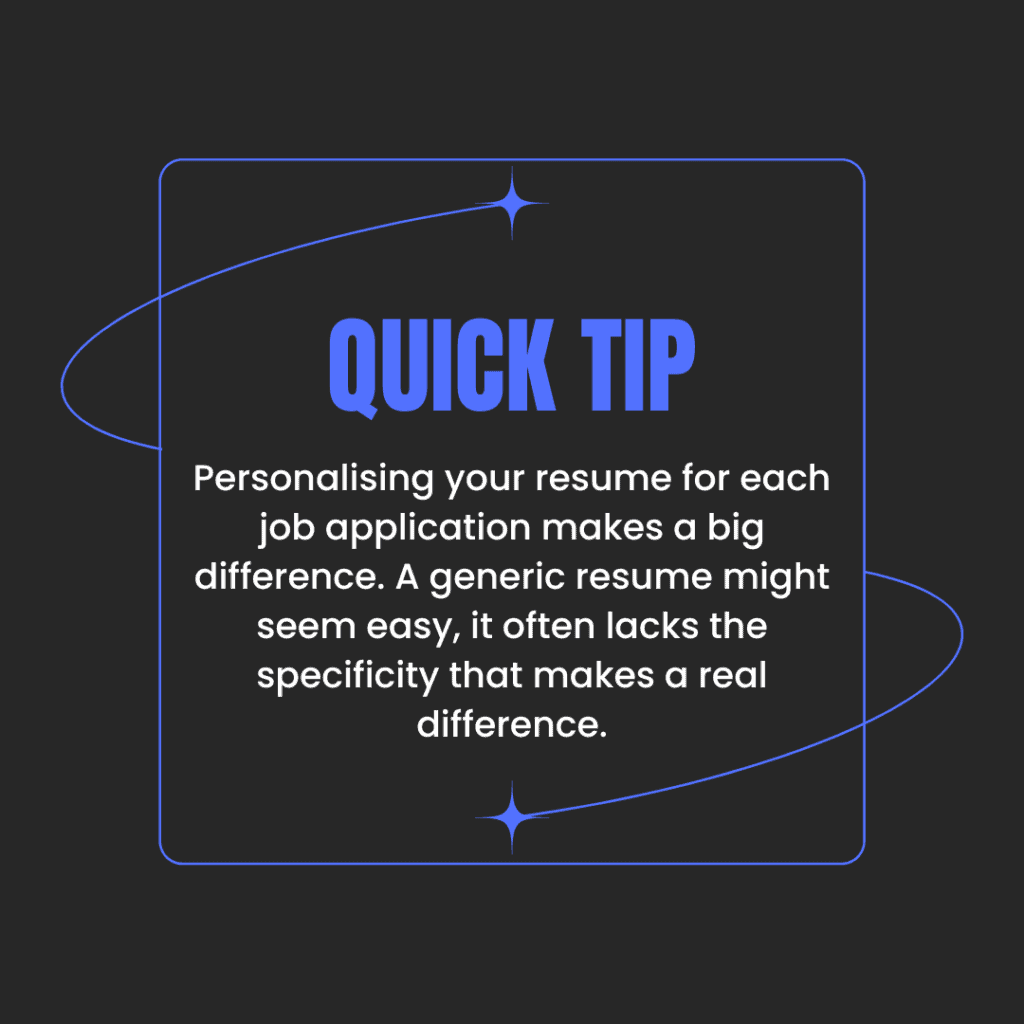
Tips for Specific Tech Roles
Here are a few basic tips on how to refine your resume toward a job-specific role:
Analyse and Align with Job Postings: Read job descriptions carefully and tailor your resume accordingly. Successful resumes use exact terms from the job posting and show a clear fit for the role. The process is very simple; you’re trying to write “like for like.”
Showcase Relevant Projects: Include detailed descriptions of projects that match the role. For example, if the job requires experience in machine learning, describe your role in developing or implementing machine learning models, specify the algorithms and outcomes. When resume writing try to avoid detailing in your resume every single project you worked on; keep the content relevant.
Highlight Technical Skills: Create a section for technical skills and list relevant programming languages, frameworks, and tools. Resumes that clearly articulate these skills in context with your experience tend to be more effective.
Quantify Achievements: Numbers speak louder than words. Use numbers to illustrate your impact, e.g., “Built a web application that increased user engagement by 40%.” This makes your achievements more tangible and impressive.
Navigating Applicant Tracking Systems (ATS)
Applicant tracking systems have become more and more integrated into day-to-day recruitment, making it a breeze for recruiters to quickly sort candidates by technical relevancy and skill sets.
To get through the ATS maze, remember:
Identifying and Using Keywords:
Extract keywords from job descriptions, including technologies and skills. Resumes that include these keywords effectively will pass through ATS filters.
Use Keywords Naturally:
Use keywords in a way that feels natural in your resume. Don’t keyword stuff, which can make your resume seem fake.
Structure for ATS Compatibility:
Make sure your resume is formatted so ATS can read it. Use standard headings and avoid complex formatting that will confuse the system.
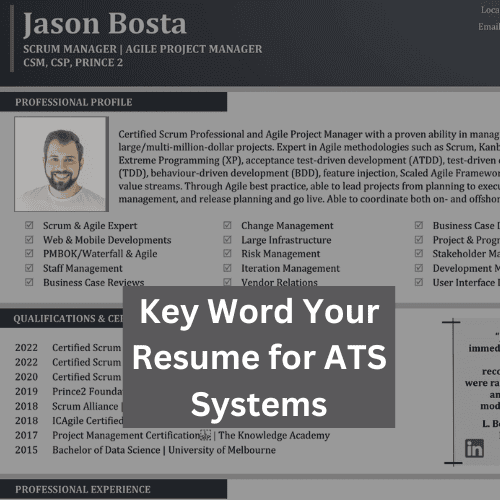
Choosing the Right Resume Format
- Header: Include your name, contact information, and links to your professional profiles (LinkedIn, GitHub). For tech roles, a link to your portfolio or personal website can be very useful.
- Professional Summary: Write a short summary that highlights your key skills and experiences relevant to the role. A good summary can grab the attention of hiring managers quickly.
- Skills Section: List your technical skills clearly, using bullet points or a table format. This section should match the specific skills required for the job.
- Experience: Detail your work history with a focus on relevant roles and achievements. Use bullet points to describe your responsibilities and accomplishments; include metrics where possible.
- Education: Include your educational background and relevant certifications. Highlight degrees and certifications that are relevant to the tech industry.
- Projects: You may want to add a separate section for key projects, describing your role, technologies used, and outcomes. Detailed project descriptions can demonstrate your technical skills well.
- Additional Sections: Consider including sections on publications, awards, or professional memberships if applicable.

Final thoughts…
There’s no prize for guessing what difference a good resume can make, but there’s definitely a prize for getting it right! By tailoring your resume to specific roles, highlighting your technical skills, and optimising for ATS systems, you’ll be set up for success in the tech job market. Remember, your resume isn’t just a shopping list – it needs personality.
Name, contact information, and links to your professional profiles (LinkedIn, GitHub). For tech roles, a link to your portfolio or personal website can be very useful.
- Professional Summary: Write a short summary that highlights your key skills and experiences relevant to the role. A good summary can grab the attention of hiring managers quickly.
- Skills Section: List your technical skills clearly, using bullet points or a table format. This section should match the specific skills required for the job.
- Experience: Detail your work history with a focus on relevant roles and achievements. Use bullet points to describe your responsibilities and accomplishments; include metrics where possible.
- Education: Include your educational background and relevant certifications. Highlight degrees and certifications that are relevant to the tech industry.
- Projects: You may want to add a separate section for key projects, describing your role, technologies used, and outcomes. Detailed project descriptions can demonstrate your technical skills well.
- Additional Sections: Consider including sections on publications, awards, or professional memberships if applicable.
Need help with your IT Resume?
A Results-Driven CV & Resume Writer
- 98.8% Success rates across all markets
- 25 years market knowledge
- A personal one-to-one approach
- We guarantee our work
